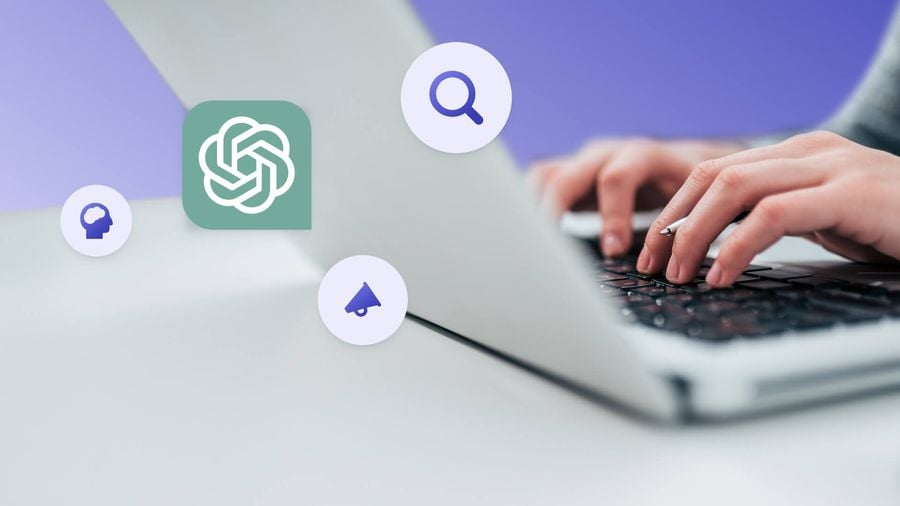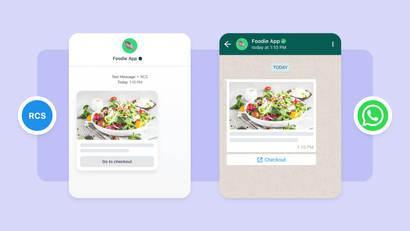Have you ever watched your parents or grandparents struggle to Google something and had this reaction:
In their defense, knowing how to Google something is an acquired skill — albeit one that younger generations have learned instinctively through ritual practice. But if you’re ever challenged to explain why certain queries are ineffective or inefficient, you’d be surprised at how many tacit rules there are for this ostensibly simple task.
With the advent of generative AI platforms like ChatGPT, we’re all being forced to revisit and adapt our query-writing skills. Generative AI tools such as ChatGPT have their own protocols, limitations, and strengths, which can be used to guide how we leverage them to the greatest advantage.
As you begin using generative AI to enhance your marketing and engagement strategy, we’ve outlined 10 best practices to bear in mind.
1. Be Specific
The more specific you are about what you’re looking for, the more relevant the output will likely be. Unlike Google, ChatGPT doesn't have a did you mean? feature, which helps guide search results and gives some insight into how the algorithm works.
In addition to clearly stating your query, make sure to provide the necessary context, criteria, constraints, and prior knowledge assumptions that can help the AI model generate more accurate responses. For instance, asking ChatGTP what does conversion mean? is very different than asking it what does conversion mean in the context of mobile app push notification marketing campaigns?
Try to avoid ambiguous or vague language that can lead to misunderstandings. If you want ChatGPT to make your email copy better, be specific about what “better” means to you — should it make the copy more concise or more friendly in tone? Should it take word count limitations into account?
2. Use Proper Formatting
Whereas a jumble of keywords can get you where you want to go in Google, ChatGPT favors readable, well-organized content. In fact, ChatGPT excels at answering longer queries with lots of information — as long as they’re clearly structured. To improve your results, type out your questions fully and use paragraphs, headings, and punctuation if it helps make your line of inquiry easier to follow. You can hold Shift > Return to jump to a new line without submitting your question and use “-” as bullet points.
3. Define Your Desired Output
If you tell a waiter at a restaurant that you want pasta when what you really want is meat lasagna, you're going to be disappointed when your meal arrives. The same general concept applies to ChatGPT. If you clearly communicate the type of response or format you expect, you’re more likely to end up with something that aligns with your expectations. For example, if you want a step-by-step explanation, explicitly request it. If you need code snippets or examples, mention that in your query.
4. Stick to One Question at a Time
Like Google, ChatGPT performs better when you ask one question or make one request at a time. If you have multiple questions, breaking them up into separate queries helps the model’s ability to focus and provide precise responses. Similar to human conversations, you can reference previous examples or questions in your follow-up queries to ensure that ChatGPT understands the context without repeating yourself every time.
5. Mind Your Manners
Yes! This actually matters — not to your survival in a Terminator-esque situation, but to the quality of your experience using the platform (and perhaps your conscience). According to ChatGPT, "maintaining a polite and respectful tone in your queries can foster a positive and cooperative interaction with the model. Even though ChatGPT is an AI, treating it with respect sets a good example for human-human interactions and helps create a more positive experience."
6. Know the limitations and strengths of each AI Model
Remember that ChatGPT is a language model trained on vast amounts of text but does not have real-time access to the internet or the latest information. According to ChatGPT, here are some known limitations of its model:
- Lack of Real-Time Information: ChatGPT does not have access to real-time information or the ability to browse the internet. Its responses are based solely on the data it was trained on, which has a cutoff date (September 2021 for GPT-3.5). As a result, it may not provide the most up-to-date or current information on rapidly evolving topics or events.
- Potential for Inaccuracies: While ChatGPT strives to provide accurate information, it can still generate responses that are factually incorrect or misleading. It's essential to fact-check and verify the information before relying on it for important or sensitive matters.
- Sensitivity to Input Phrasing: ChatGPT's responses can be sensitive to slight changes in input phrasing. Modifying the wording of a question or providing additional context can lead to different responses. This means that small changes in the way a query is formulated can have a significant impact on the output.
- Tendency to Guess: When faced with ambiguous queries or incomplete information, ChatGPT may attempt to guess what the user intended. This can result in responses that may not accurately address the user's actual question or needs. It's important to provide clear and specific queries to minimize guessing.
- Lack of Common Sense and Contextual Understanding: ChatGPT may not always demonstrate common sense reasoning or fully understand the context of a conversation. It can generate responses that sound plausible but may not be accurate or practical in real-world scenarios. Contextual limitations can lead to responses that are out of context or lack a deep understanding of specific topics.
- Potential for Biased Responses: Language models like ChatGPT learn from vast amounts of text data, which can include biases present in the training data. This may lead to biased or unfair responses on certain topics or towards specific demographics. It's crucial to critically review and challenge the generated content to ensure fairness and inclusivity.
- Length and Coherence Constraints: ChatGPT has limitations on the length of responses it can generate effectively. If a query requires extensive or detailed explanations, the model may struggle to provide comprehensive answers. Additionally, ChatGPT's responses may lack coherence and sometimes veer off-topic or produce nonsensical sentences.
7. Ask for Clarification
ChatGPT is a powerful language model, but it does occasionally generate responses that are ambiguous, imprecise, or just plain factually incorrect. By seeking clarification, you give yourself an opportunity to understand the model's response better and ensure that the information provided is accurate and aligned with your goals. If the response you receives doesn’t resonate with you, asking for clarification can also help you understand how to better communicate your intent.
Additionally, it’s important to remember that ChatGPT lacks real-time context and therefore relies solely on the information you provide. Like humans, ChatGPT is heavily susceptible to the pitfalls of leading questions. In other words, it will guide and structure its responses based on what you’ve primed it with, sometimes at the expense of accuracy or comprehensiveness. To ensure that you’re getting the most accurate results, don’t be afraid to ask ChatGPT what studies and articles it’s using to draw its conclusions. Before you take its word as gospel, check its work, so to speak, by verifying sources and information in Google and other resources.
8. Test and Iterate
If you’re not happy with the responses you’re getting, try rephrasing your question or adding additional context or parameters. Remember that query writing is a skill, and embrace the learning process that will ultimately make you more efficient and effective tomorrow.
Even if you’re satisfied with the results you receive, try playing around with your question structure and comparing the output. Doing so will help you optimize your technique, efficiency, and troubleshooting skills in the future.
9. Provide Feedback
If you receive a response that’s inaccurate or unsatisfactory in some way, don’t hesitate to (politely) tell ChatGPT how and why the answer missed the mark. Doing so will not only help you hone the context of your query but also contribute to the product’s ongoing development and help improve its performance over time.
10. Use Your Brain
What, that old thing? Although generative AI can help you work more efficiently, it shouldn’t take critical thinking out of work. Before you copy, paste, and hit send, take time to iterate and review what you've been given.
As you review content, make sure to:
- Fact check
- Maintain quality control and style guide alignment
- Ensure voice and tone alignment with your brand, use case, and target audience
- Check for cultural and contextual appropriateness
- Add creative flair and real-world examples
- Check for legal and ethical concerns
Remember that credibility and trust are the lifeblood of marketing. Reviewing, enhancing, and refining content created by ChatGPT is the best way to reinforce your reliability, protect your brand reputation, and show your audience that you’re committed to using this new tool in a responsible and thoughtful way.
Other Tools to Improve Your Efficiency & Effectiveness
OneSignal is designed to help you seamlessly craft, coordinate, and publish your marketing campaigns across every channel, including email, mobile push notifications, web push notifications, bulk SMS, and in-app messaging. Our platform is quick to set up and makes it easy to automate your engagement efforts and retain customers without doing any development work.
Reach out to us to get tailored advice based on your wish list and learn more tricks and tools to enhance your customer engagement strategy.
Chat with an Expert



